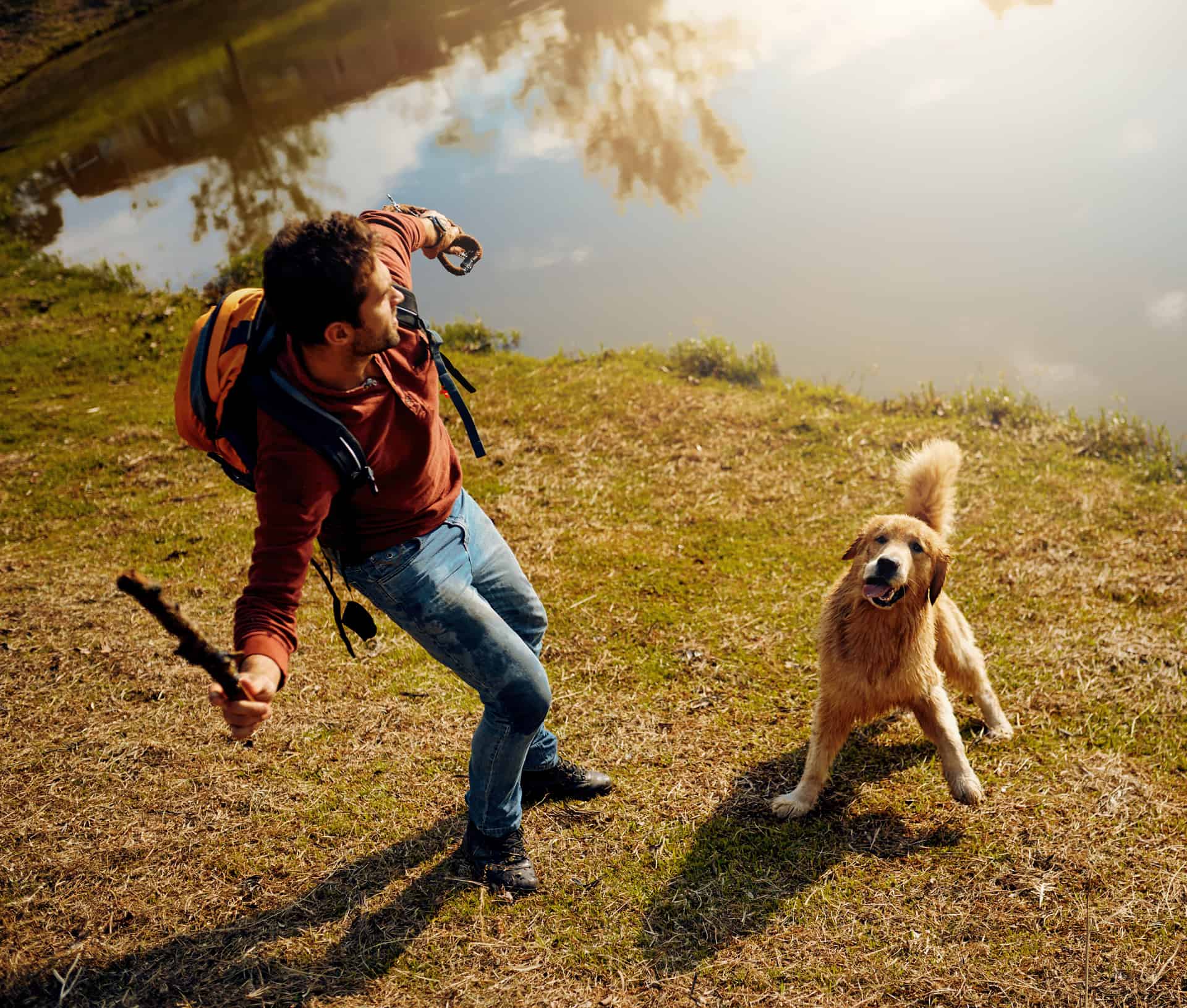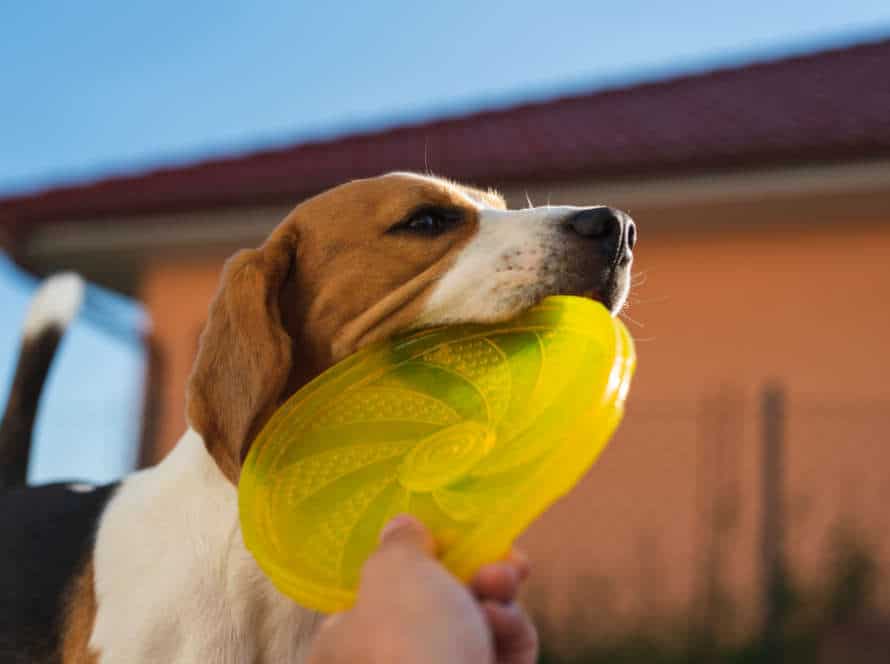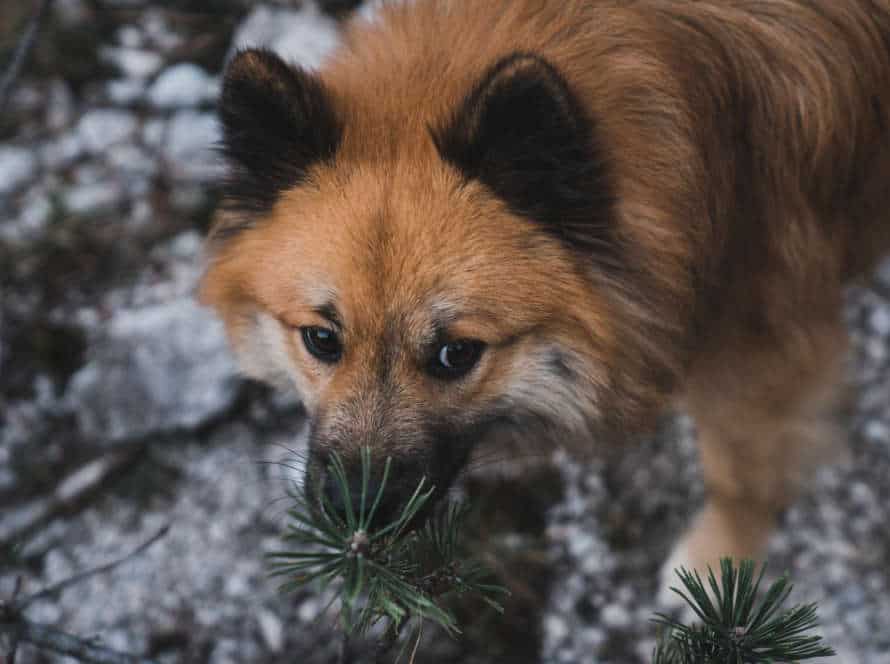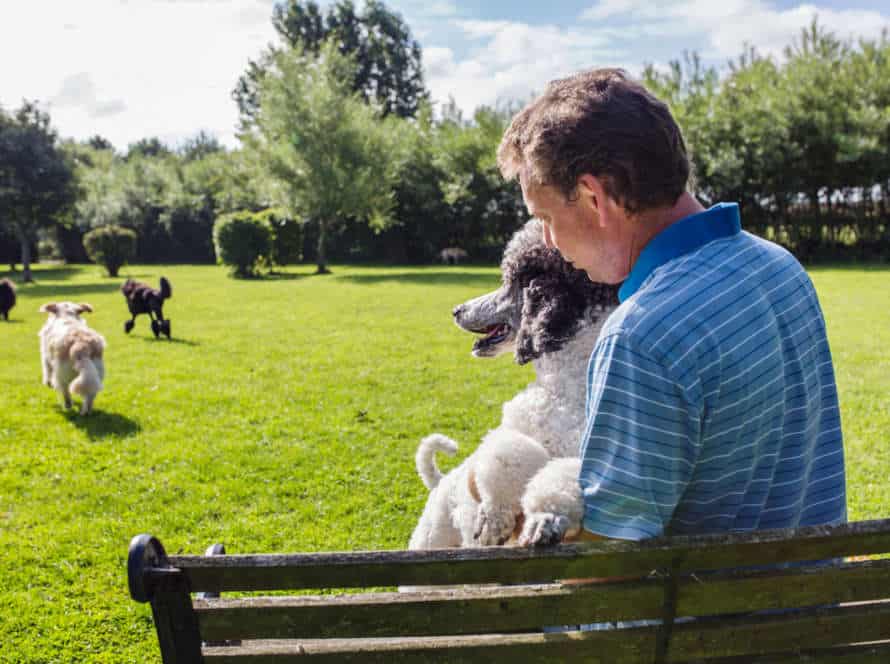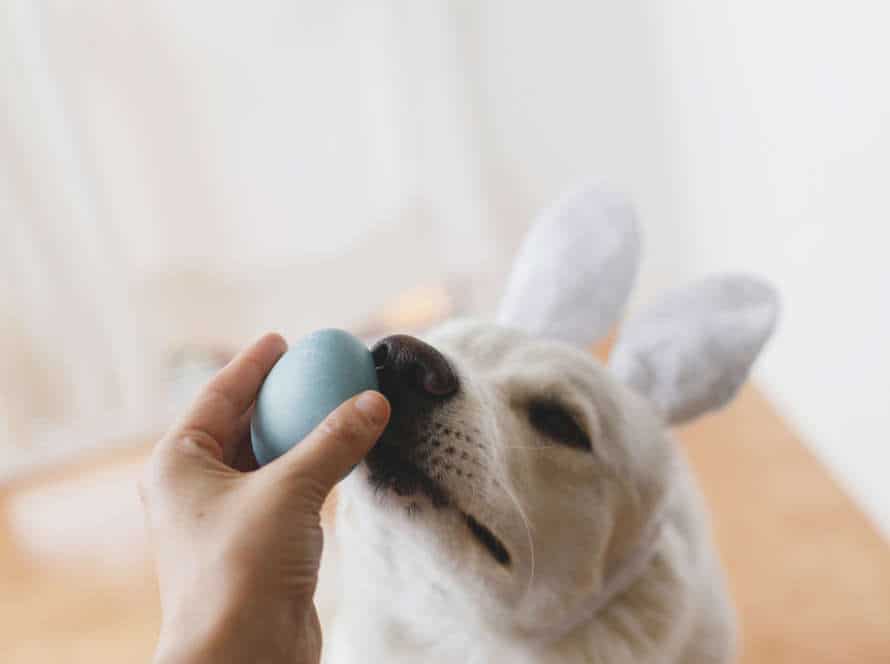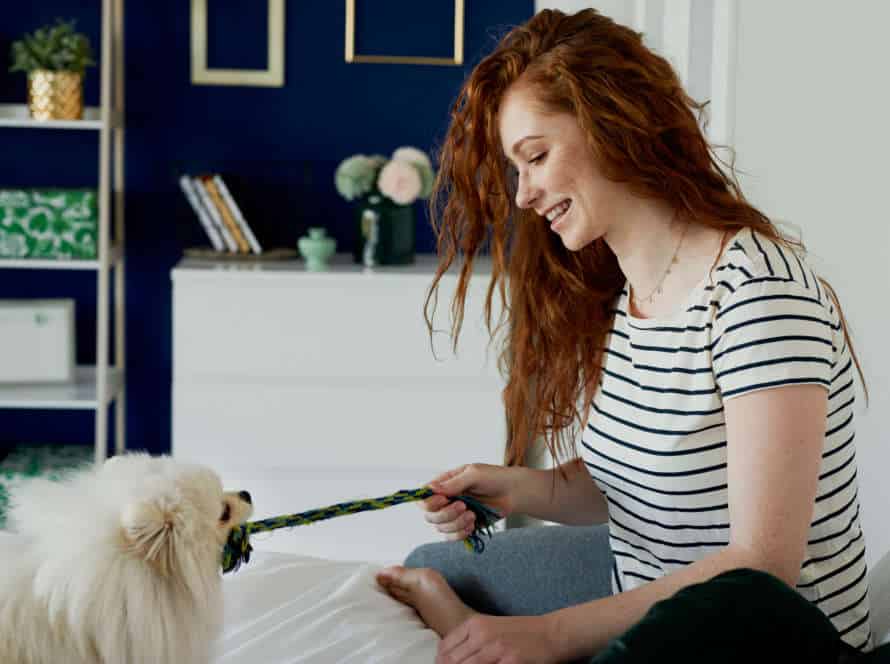Teaching Your Dog to Fetch: A Step-by-Step Guide
Teaching your pup or adult dog to fetch can be a fun bonding experience! Here’s a guide on how to do it:
- Choose the right toy for fetching.
- Let your dog explore it.
- Encourage them to pick it up with treats.
- Throw it short distances and praise ’em when they bring it back.
- Increase the distance and use cues like “fetch” and “drop it”.
- Reward with praise, treats, or playtime.
- Be patient and consistent – and enjoy the bond!
Teaching the Basics of Fetch
Teaching your pup to fetch can be loads of fun! Get them outdoors and give their body and mind a good workout.
To start, your dog needs to learn the basics – like retrieving items, telling the difference between objects, and bringing them back to you.
Here’s the steps for teaching the basics of fetching to your furry friend:
- Choose the right location: Start with an area where your dog feels comfortable and safe, such as your backyard or a nearby park.
- Find the perfect toy: Pick a toy that your pup loves and is easy to grab, like a tennis ball or frisbee.
- Tease your dog: Get your dog excited about the toy by playing with it in front of them and getting them to chase it.
- Throw the toy: Toss the toy a short distance and encourage your dog to run after it.
- Encourage your dog to bring it back: Encourage your dog to pick up the toy and bring it back to you, using positive reinforcement like treats or praise.
- Repeat: Practice the basics of fetching regularly, gradually increasing the distance and difficulty of the throws as your dog gets more confident.
Establishing Trust and Positive Reinforcement
Establishing trust and positive reinforcement is key when teaching your pup to fetch. It will help form a connection between you and your furry companion and make the learning experience more delightful and gratifying.
Here are some tips to build trust and use positive reinforcement when teaching your dog to fetch:
- Start with basic commands such as “Come” and “Stay” before progressing to “Fetch”. This will create trust and obedience between you and your pup.
- Utilize positive reinforcement techniques such as treats or verbal praise to motivate your dog throughout the learning process.
- Be tolerant and consistent with your training. Your pup may not learn to fetch immediately, but in time they will get it.
- Always finish your training sessions on a positive note with lots of compliments and rewards. This will form a positive relationship with fetch and make your dog more enthusiastic to learn.
By establishing trust and using positive reinforcement techniques, you can train your pup to fetch in an enjoyable way for both you and your pet. Pro tip: Don’t forget to be tolerant and give your furry friend loads of love and encouragement while they learn!
Getting Your Dog Excited About Fetch
Teaching your pup to fetch is great for bonding and exercise. Here’s how.
- Find a toy your dog loves – a ball or Frisbee.
- Grab their attention, then show them the toy.
- Throw the toy a short distance and say “Fetch!”
- Use an excited tone to encourage them to go after it.
- Praise and use a “release” command when they reach it.
- Gradually increase the distance of your throws.
- Reward your dog with treats or praise.
Pro Tip: Positive reinforcement and patience are key. Keep training fun and short to prevent boredom. With practice and consistency, your pup will be excited about fetch soon!
Starting with the Basics: Teaching Your Dog to Grab and Hold
Train your pup to grab and keep an item. Here’s a guide:
- Choose a soft toy your dog can hold in its mouth.
- Use a command like “take it” and help your pooch to the toy with your hand.
- Reward with praise and treats when they pick up the item. Repeat until your pup does this automatically.
- Then, add the “hold” command and praise them for keeping the toy in their mouth.
- Practice this command and make the time longer each time.
- Add the “drop it” command and reward the pup with praise and treats when they do it.
With practice, your pup will soon be an expert fetcher!
Retrieving Objects and Bringing It Back
Want to get your pup some exercise and have fun? Teach them to fetch! Follow these simple steps and you’ll have your pup retrieving objects and bringing them back to you in no time. Here’s how:
- Select the right fetch toy – choose a toy that is easy for your pup to pick up and carry in their mouth, but not too small that they can swallow it.
- Introduce the toy to your pup – let your pup smell and examine the toy before tossing it.
- Start indoors – play fetch in a space with few distractions, such as a hallway.
- Toss the toy – gently throw the toy a short distance and encourage your pup to go after it.
- Encourage your pup to bring it back – call your pup’s name and use a command like “come” or “fetch” to encourage them to bring the toy back to you.
- Reward your pup – when your pup successfully retrieves the toy, reward them with a treat and lots of praise.
- Practice regularly – make fetch a regular part of your pup’s exercise routine to reinforce the behavior.
Using Playtime to Encourage Retrieving
Fetching with your pup is an awesome way to get them retrieving and better their obedience. Here are a few tips for teaching ’em:
- Select a toy that your pup likes and is good for fetching.
- Hold the toy and say “fetch” in a kind voice.
- Toss the toy a short distance and urge them to get it.
- Reward them with a treat and loving reinforcement when they bring it back.
- Do this again, gradually increasing the distance.
- To enhance obedience, practice other commands like “sit” and “stay” in between fetch times.
- Make sure fetch is always a positive experience and be consistent and patient with training.
With practice, your dog will love playing fetch and become a pro!
Teaching Your Dog to Release Objects on Cue
Train your pup to let go of items with a cue. Here’s how:
- First, teach your dog to fetch and bring back something.
- Once they have mastered it, hold a treat and give a command to release the item – like “drop” or “give“.
- Reward your pup with the treat and lots of praise when they drop the object.
- Keep repeating until your pup knows the command means to let go.
- As they become consistent, phase out treats and use more praise.
With patience and consistency, your pup will learn to release items on command. Pro-tip – use an excited tone of voice to make training more fun for them.
Encouraging Your Dog to Bring the Object Back to You
Training your pup to bring an item to you is a vital part of teaching them how to fetch. To learn how, follow these steps:
- Pick a toy or something your pooch loves to play with.
- Show the toy to them and get them to grab it with their mouth.
- Once they have the object, say “come” whilst opening your arms and showing enthusiasm.
- When your pup returns to you, use commands like “give” or “drop it” to get them to give you the object.
- Give them rewards and praise to reward good behavior.
- Do this several times a day until they can fetch the object and bring it back upon command.
Remember to keep sessions short and positive, and be consistent and patient with their progress.
Training Your Dog to Fetch from a Distance
Training your pup to run and get things from afar is a significant step in teaching them. This will show them fetching is fun and they can join in. Also, it will let you teach them to obey orders from far away. Let’s start now! This opens the door for more difficult tasks, such as bringing back particular objects.
Getting Your Dog Comfortable with Longer Distances
Gradually make your pup comfy with far-off fetch training. Here’s how:
- Start with short-distance fetch and raise the distance bit by bit as your pup gets familiar.
- Utilize positive reinforcement tactics like awarding treats and applause when they successfully fetch.
- Utilize voice commands like “fetch” and “come” to teach your pup to obey verbal orders.
- Once your pup is comfy with you throwing, introduce other people to throw for more range.
- When pup is more advanced, toss the item on rough ground for extra difficulty.
Patience and consistency are the keys. Pro tip: Practice in wide, low-distraction areas and always ensure your pup’s safety.
Using Positive Reinforcement to Encourage Long Distance Fetching
Positive reinforcement is a great way to teach your pup to fetch from far away. Reward desirable behavior, like when they bring the ball back to you, with treats and praise. Here’s how to do it:
- Start small – just a few feet away. Reward your pup with treats and kind words when they bring the ball back.
- Gradually increase the distance, by a couple of feet at a time. Keep giving rewards each time they bring the ball back.
- Use a long leash to give your pup more freedom to run and fetch the ball further away, while still having control.
- Be patient. With some practice, your pup will soon be able to fetch from a distance and have fun with it!
Incorporating Commands and Signals to Advance Your Dog’s Training
Train your pooch to fetch from afar by using commands and signals. Here’s how:
- Begin by teaching your dog to fetch nearby using a standard fetch toy.
- Gradually expand the gap between you and your pup while playing fetch.
- Once your furry pal is comfy with faraway fetching, incorporate a command like “go long” or “fetch far.”
- Use hand signals to direct your doggo to the fetch toy and motivate them to return it to you.
- Reward them with a treat and praise when they successfully retrieve the toy from a distance.
- Be patient and keep repeating the training, increasing the distance each time and adding new commands and signals.
Fixing Common Problems
Fetching with your pup can be fun and rewarding. But, it can be tricky! Don’t fret! Many people have this issue. Here’s some advice to help you fix fetching problems with your doggo.
Reducing Destruction and Avoiding Chewing on Objects
Have fun bonding with your pup by teaching them how to fetch! Some dogs find it tricky to return the item, so they end up chewing it. Here’s how to teach your pup to fetch and stop them from destroying objects:
- Choose a toy or object your dog loves playing with.
- Show it to them and encourage them to pick it up with praise and treats.
- Throw the object a short distance and ask them to “fetch” it.
- As soon as they pick the object up, call them back to you with a treat.
- Reward them for returning the object and not chewing it.
- Gradually increase the difficulty of the fetching exercises as they get more familiar with it.
With patience and practice, your pup will soon fetch without ruining anything!
Encouraging Playing with You and the Object, Rather Than Alone
Teaching your pup to fetch? Here’s how:
- Choose a safe, soft object like a tennis ball or plush toy.
- Let them sniff and play with it.
- Throw it a short distance away, then get excited and use words like “fetch” and “bring it back“.
- When they return, reward them with plenty of praise, treats, and belly rubs.
- Gradually increase the distance and difficulty.
- Play with your pup to show fetching is fun and rewarding.
- Do this and you’ll strengthen your bond with them!
Reducing Anxiety and Enthusiasm to Bite and Control the Object
When teaching your pup to fetch, it’s vital to help them relax and not bite the object. Training and positive reinforcement can help. Here’s how:
- Start small. Give your dog a soft toy they can carry.
- Encourage them to take it. Praise them when they do.
- Reward them with treats and praise for holding the toy without biting it.
- Throw the toy short distances and reward them for bringing it back.
- Progressively increase the distance and the number of toys. Keep rewarding good behavior.
By following these steps, you can train your pup to fetch and control their anxiety when playing with toys.
Advanced Fetch Training Techniques
Fetch training is key for teaching your pup obedience. If your fur-baby has a handle on the basics, like bringing back a toy, you can move on to advanced techniques. These can reinforce good behavior and offer mental stimulation. Here, we discuss some advanced fetch training techniques that can be used with your dog.
Introducing Multiple Objects & Switching Between Them
Introducing your pup to multiple items and teaching them to switch between them is a cool way to teach them fetching. It can also boost their brainpower and make it an enjoyable activity! Here’s how:
- Start with two unique items, such as a ball and a frisbee.
- Instruct your pup to get one object then bring it back.
- Introduce the second item and get them to fetch that one too.
- Command them to “drop it” when they bring back an item. And when you want them to switch, say “go get it” for the other one.
- Gradually raise the number of items and the difficulty of the commands.
This technique aids in enhancing your dog’s memory, problem-solving skills, and general conduct.
Incorporating More Advanced Commands and Tricks
Fetch training is a great way to bond with your pup. Once your doggo knows the basic techniques, you can use more advanced techniques.
- Give hand signals: Point to where you want your dog to go and command ‘fetch’ to make them follow.
- Teach “drop it”: ‘Drop it’ is essential for dogs who don’t drop the toy near you. Reward them with a treat when they let go.
- Play hide and seek: Hide the toy in a different spot and tell your pup ‘find it’ to get them to search. This will help their problem-solving skills.
- Use different toys: Introduce different kinds of toys to keep them engaged and interested.
Always use positive reinforcement and praise your dog. With patience and practice, your pup will be a fetch master soon.
Pro tip: Include obedience training in your fetch sessions to reward good behavior and keep your pup mentally stimulated.
Overcoming Distractions and Reactions during Fetch Time
Distractions and reactions can become huge issues when training your pup to fetch. But, don’t worry! Here’re some tips to help you:
- Begin with basic obedience training to build a strong relationship between you and your pup.
- Introduce distractions and challenges like noisy environments or other dogs slowly.
- Use treats and praise for good behaviour and to stop negative reactions.
- Remain calm and patient when your pup gets distracted or reactive, then re-direct their attention back to the task with toys or verbal commands.
- With practice and consistent training, even with distractions or reactions, your pup can become a fetch pro!
Frequently Asked Questions
Q: What do I need to teach my dog to fetch?
A: You will need a ball or toy to throw, treats for rewards, and a leash if your dog is not yet trained to obey commands off-leash.
Q: How do I start training my dog to fetch?
A: Start by enticing your dog with the ball or toy, then throw it a short distance and encourage your dog to go retrieve it. Reward your dog with treats when they bring it back to you.
Q: How can I encourage my dog to bring the ball back to me?
A: Use positive reinforcement techniques such as offering treats and praise when your dog successfully brings the ball back to you. You can also try using a toy tug-of-war game to get your dog excited and willing to bring the ball back.
Q: What if my dog doesn’t like to fetch?
A: Not all dogs enjoy fetching. Try different types of toys or games to see what your dog prefers. You can also consult a professional trainer for additional guidance.
Q: Should I use a specific command when teaching my dog to fetch?
A: Yes, it is important to use a consistent command such as “fetch” or “go get it” to help your dog understand what behavior you are asking for.
Q: What if my dog doesn’t bring the ball back all the way?
A: Start training indoors or in a small enclosed area and use a long leash to encourage your dog to bring the ball all the way back to you. Gradually increase the distance and remove the leash once your dog is consistently bringing the ball back to you.

